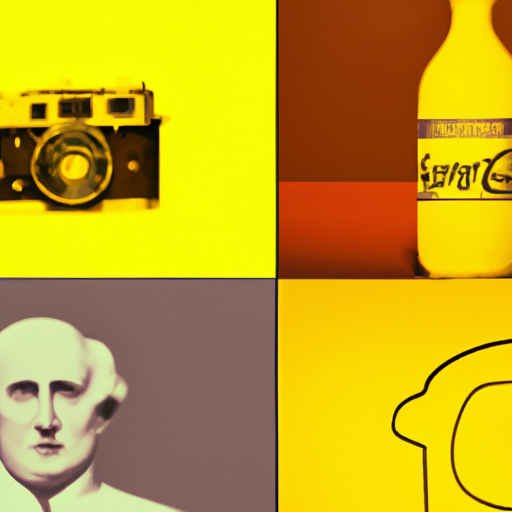
-
Table of Contents
The Role of Social Commentary in Graphic Design

Graphic design is a powerful medium that combines visual elements with communication to convey messages and ideas. While it is often associated with aesthetics and branding, graphic design also plays a significant role in social commentary. Through thought-provoking visuals and clever design choices, graphic designers have the ability to address social issues, challenge norms, and spark conversations. In this article, we will explore the importance of social commentary in graphic design and how it can create a lasting impact.
1. The Power of Visual Communication
Visual communication is a universal language that transcends barriers of language and culture. It has the ability to evoke emotions, convey complex ideas, and capture attention in a way that words alone cannot. Graphic design harnesses this power by combining images, typography, colors, and other visual elements to create compelling messages.
When it comes to social commentary, graphic design can be a powerful tool for raising awareness and initiating change. By visually representing social issues, designers can engage viewers on an emotional level and encourage them to think critically about the subject matter. This can lead to increased empathy, understanding, and action.
2. Addressing Social Issues
Graphic design has the ability to shine a spotlight on social issues that are often overlooked or ignored. By visually representing these issues, designers can bring them to the forefront of public consciousness and encourage dialogue and action.
For example, the “We Can Do It!” poster created by J. Howard Miller during World War II has become an iconic symbol of female empowerment. The image of a strong, determined woman flexing her arm has been widely used to advocate for gender equality and women’s rights. This simple yet powerful graphic design has helped to raise awareness about the importance of gender equality and inspire generations of women.
Another example is the work of Shepard Fairey, who created the famous “Hope” poster during Barack Obama’s presidential campaign in 2008. The poster, featuring a stylized portrait of Obama with the word “Hope” underneath, became an iconic symbol of the campaign and a powerful representation of the desire for change. Fairey’s design not only captured the spirit of the campaign but also sparked conversations about race, politics, and the power of visual communication.
3. Challenging Norms and Stereotypes
Graphic design can also challenge societal norms and stereotypes by presenting alternative perspectives and narratives. By subverting expectations and pushing boundaries, designers can challenge the status quo and encourage viewers to question their own beliefs and biases.
One example of this is the work of Barbara Kruger, a renowned artist and graphic designer known for her bold, text-based artworks. Kruger’s designs often feature provocative statements and questions that challenge traditional notions of power, gender, and consumerism. Her work forces viewers to confront their own assumptions and consider alternative viewpoints.
Another example is the “Black Lives Matter” movement, which has been supported by powerful graphic design. The movement’s logo, featuring the words “Black Lives Matter” in bold, capitalized letters, has become a symbol of resistance against racial injustice. The design is simple yet impactful, conveying a powerful message and challenging the systemic racism that persists in society.
4. Sparking Conversations and Creating Dialogue
Graphic design has the ability to spark conversations and create dialogue around important social issues. By presenting information in a visually compelling way, designers can capture attention and encourage viewers to engage with the content.
One example of this is the “Gun Deaths” project by The Guardian, which used graphic design to visualize the impact of gun violence in the United States. The project featured a series of interactive graphics and data visualizations that allowed users to explore gun deaths by location, age, and other factors. By presenting the data in a visually engaging way, The Guardian sparked conversations about gun control and prompted viewers to consider the human cost of gun violence.
Another example is the “Design for Good” initiative by AIGA, the professional association for design. This initiative encourages designers to use their skills and expertise to address social issues and create positive change. Through various projects and collaborations, AIGA has sparked conversations about topics such as climate change, racial inequality, and mental health.
5. The Role of Social Media
Social media has played a significant role in amplifying the impact of social commentary in graphic design. Platforms like Instagram, Twitter, and Facebook have provided designers with a global audience and a powerful tool for sharing their work.
Designers can use social media to reach a wider audience, engage with viewers, and spark conversations about their work. By sharing their designs online, designers can create a ripple effect, inspiring others to share, discuss, and take action.
Summary
Graphic design has the power to address social issues, challenge norms, and spark conversations. Through thought-provoking visuals and clever design choices, graphic designers can raise awareness, initiate change, and create a lasting impact. By harnessing the power of visual communication, designers can engage viewers on an emotional level and encourage them to think critically about social issues. Whether it’s through addressing social issues, challenging norms and stereotypes, sparking conversations, or leveraging the power of social media, graphic design has the ability to shape public opinion and drive positive change.
